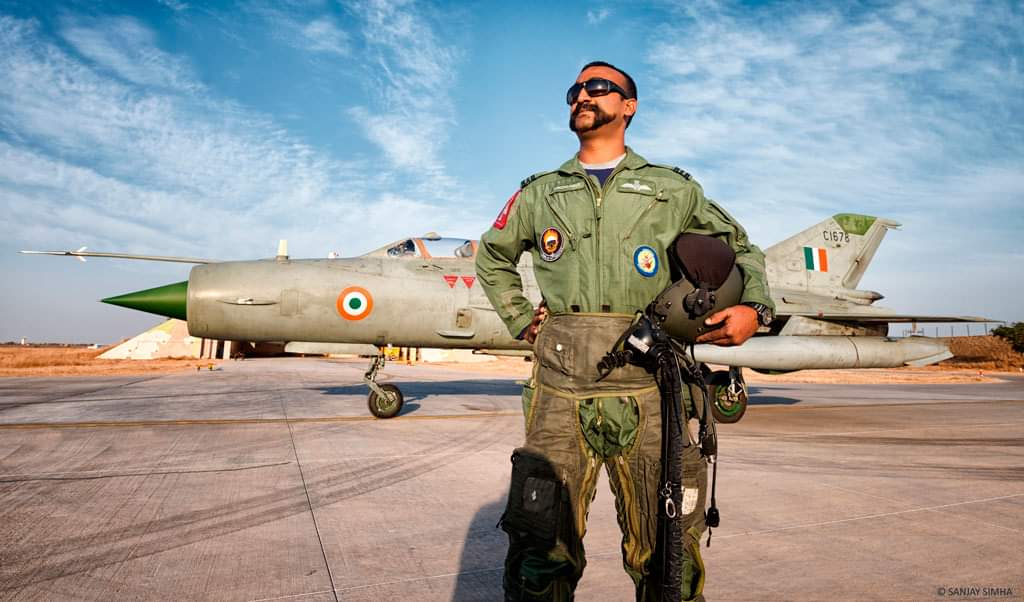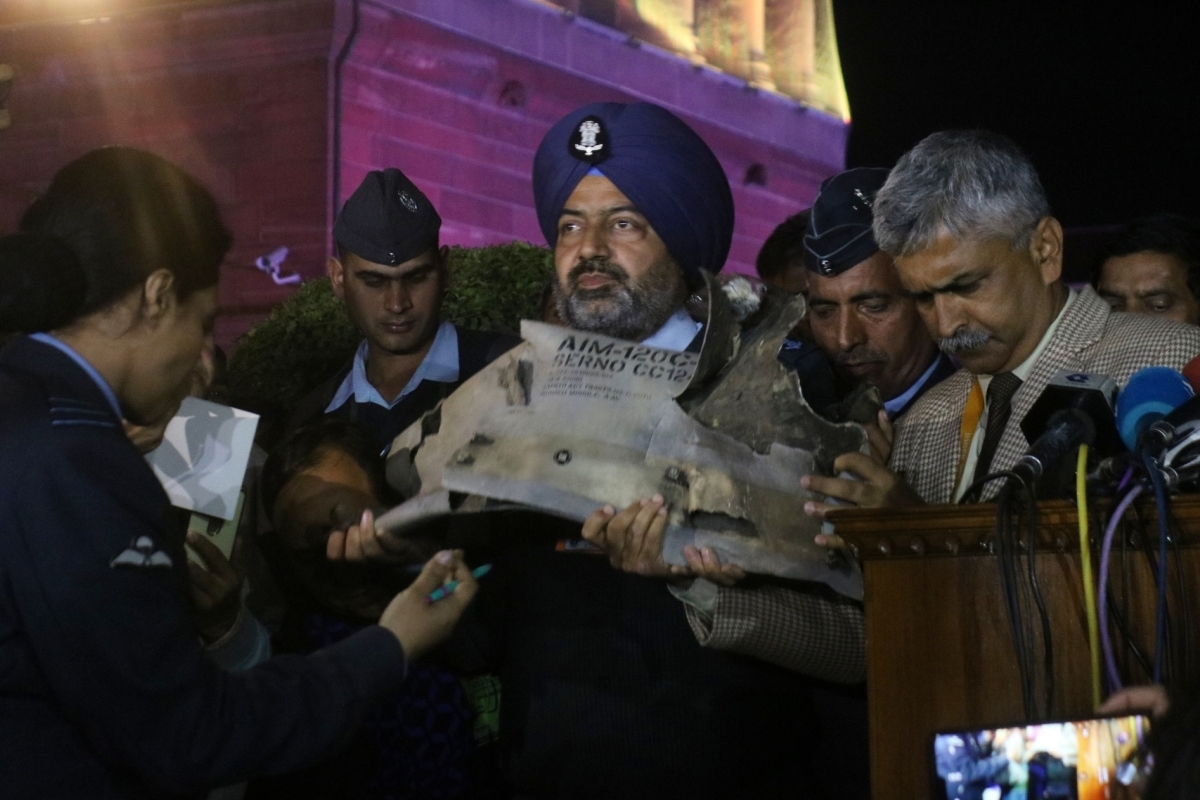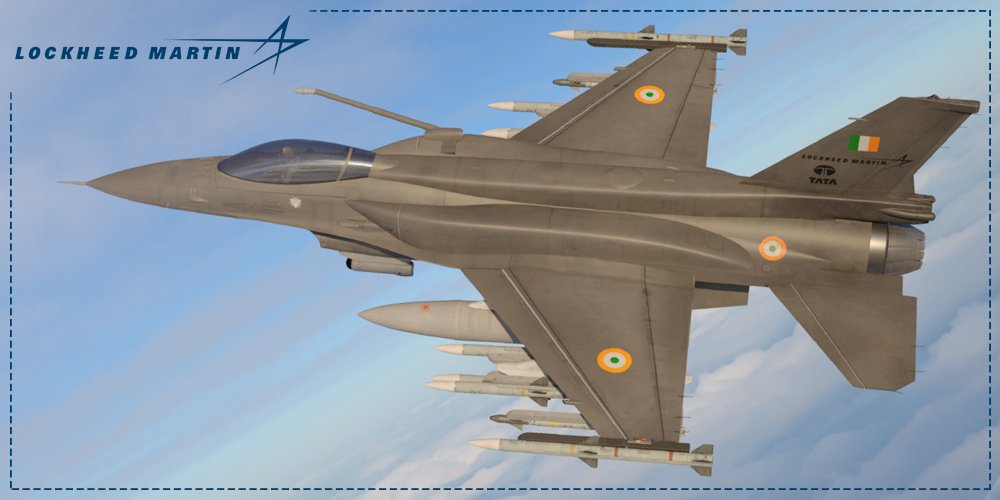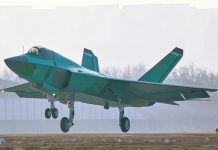Indian Air Force Group Captain Abhinandan Varthaman, who claimed to have shot down a Pakistani F-16 during the 2019 conflict, was conferred upon the Vir Chakra, India’s third-highest gallantry award, on November 22.
India Could Become 4th Country With Indigenous Stealth Fighters; To Get Prototype Approval Early Next Year — Reports
Interestingly, many believe the US could someday acknowledge the loss of Pakistani F-16 fighters to Indian Air Forces’ MiG-21 Bison.
The Story So Far
Group Captain Abhinandan Varthaman was conferred upon the Vir Chakra by President Ram Nath Kovind, who is also the Supreme Commander of the Indian armed forces.
The award was given to the IAF pilot for his role in downing an enemy F-16 during ‘Operation Swift Retort’ launched by the Pakistan Airforce in response to the IAF’s airstrikes at Balakot in the neighboring country.
Delhi: Wing Commander (now Group Captain) #AbhinandanVarthaman being accorded the #VirChakra by President Ram Nath Kovind, for shooting down a Pakistani F-16 fighter aircraft during aerial combat on February 27, 2019.
(Video: ANI) pic.twitter.com/5vlDPIOXeS
— The Times Of India (@timesofindia) November 22, 2021
On February 26, 2019, India launched airstrikes on terror camps across the Line of Control, the de facto border between India and Pakistan in Jammu and Kashmir, to avenge the killing of 44 Central Reserve Police Force (CRPF) personnel by Pakistani terror outfit Jaish-e-Mohammed (JeM).
The following day witnessed, two dozen PAF aircraft fly into Indian airspace near the LoC. During the intense air battle, Group Captain Abhinandan Varthaman [Wing Commander at the time], who was piloting a MiG-21 Bison, found himself in a dogfight with a PAF F-16.
India claimed the IAF pilot had shot down the Pakistani jet, while PAF and some quarters of the international media disputed this.

The controversy aside, the MiG-21 pilot was also shot down behind enemy lines, and the Abhinandan Varthaman was subsequently captured by Pakistani forces. The announcement of his release came two days later, a development Pakistan Prime Minister Imran Khan had described as a “peace gesture.”
India had presented evidence claiming that Pakistani F-16 fighter jets violated Indian airspace and attempted to target Indian military installations on February 27, 2019. At a tri services’ joint press conference held in New Delhi, pieces of an F-16 AMRAAM air-to-air missile were displayed before the media as proof that nailed Pakistan’s lie that they did not use an F-16 to target India.

The episode had brought the two nuclear-armed neighbors to the brink of a full-scale war.
Lockheed To Face Challenge?
The EurAsian Times had recently reported that Lockheed Martin has once again pitched its F-21 fighter aircraft for India’s exclusive use while portraying it as the most suitable aircraft for the Indian Air Force.
However, given the downing of a Lockheed Martin product in the 2019 aerial skirmish, some believe that the US aerospace giant may have to explain to the Indian government how a MiG-21 Bison downed their Fighting Falcon.

Group Captain Jhonson Chacko (Retd) offered his take on this. “The MiG-21 Bison is a 3+ generation aircraft and should not be confused with the Soviet era MiG 21s. What matters in air combat is how well a pilot exploits the advantages of the man-machine combine, and his ability to use his superior skills to come out victorious in a situation makes all the difference. Finally, it is the man behind the machine that makes the difference.“
Gp. Capt. TP Srivastava (Retd) echoed the same view, explaining that aerial combat between two fighter aircraft depends on numerous factors ranging from pilot capabilities, battlefield circumstances, weapons portfolio, overall payload, along with other mission-specific factors coming together to influence the outcome. He stressed that platform-to-platform comparisons are not founded in operational reality.
Lockheed’s F-21
Lockheed Martin has already stated that if IAF placed an order for 114 jets valued roughly at a whopping $18 billion under the MMRCA 2.0, the F-21 fighters would not be sold to any other country, as previously reported by The EurAsian Times.
Lockheed is eyeing a fighter jet deal with the IAF and has expressed interest in establishing a maintenance, repair, and overhaul (MRO) facility in the country. The company is competing with some of the best global aircraft manufacturers for this lucrative Indian Air Force contract.

William Blair, Vice President and Chief Executive of Lockheed Martin’s India operations, re-pitched their F-21 fighter plane, claiming that it is particularly configured to meet the IAF’s needs and is the best option in the force’s quest for 114 new fighter jets.
He added that the corporation is ideally positioned to collaborate with Indian companies in fields such as unmanned platforms, artificial intelligence, quantum computing, and machine learning.
Lockheed has agreed to produce the aircraft in India with the Tata group and has committed not to sell the F-21 to any other country provided the multibillion-dollar sale is secured. It faces a stiff challenge from French Rafales, which many experts have called ‘IAF’s Favourite.’
Out of the many challenges that Lockheed is facing to win the lucrative Indian deal, one big political hurdle that the US firm may also have to overcome is answering India’s question on how an advanced F-16 was shot down by a Mig-21 Bison. Will the US acknowledge the loss of the Pakistani F-16 to win the ‘big-ticket’ deal?
- Aritra Banerjee is a defense journalist who has worked in both online and print media. He has laid an emphasis on issues related to military human resources, tactical psychology, military-media relations, professional military education, and combat fitness. He can be reached at: aritrareporter@gmail.com.
- Follow EurAsian Times on Google News




